Lucid waters and lush mountains are invaluable assets. A sound ecology and environment is not just a natural asset, but also an economic asset, and it affects the potential and momentum of economic and social development.
- Xi Jinping at COP15 leaders' summit
In today's China, ecological and environmental protection have taken root in the hearts of the people, becoming increasingly popular in 2021 as the country made further progress toward achieving eco-civilization.
Here are some highlights of China's concrete actions in promoting green development.
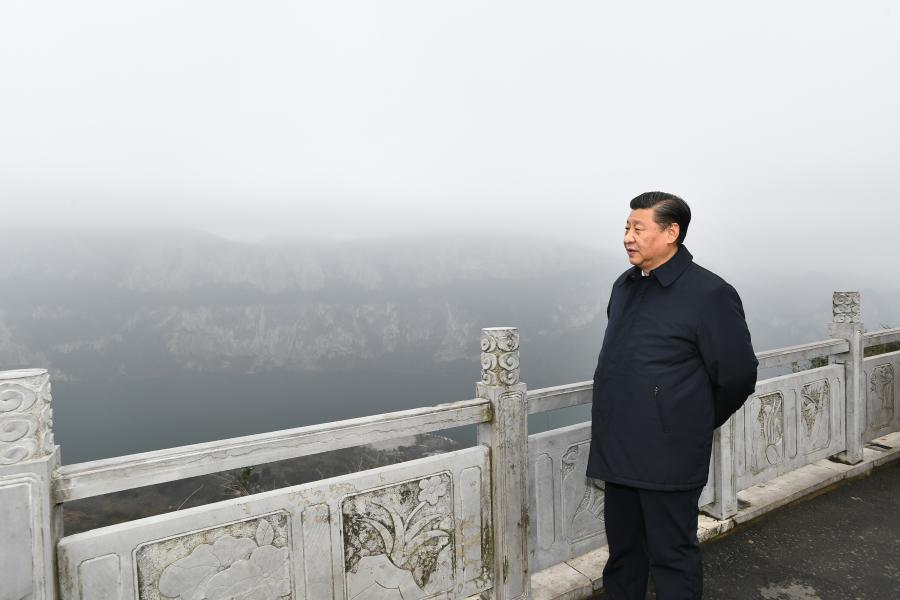
Chinese President Xi Jinping inspects the ecological environment of a major tributary of Wujiang River in Qianxi County, Bijie City, southwest China's Guizhou Province, February 3, 2021. /Xinhua
Chinese President Xi Jinping inspects the ecological environment of a major tributary of Wujiang River in Qianxi County, Bijie City, southwest China's Guizhou Province, February 3, 2021. /Xinhua
Since the 18th National Congress of the Communist Party of China (CPC), Chinese President Xi Jinping, also general secretary of the CPC Central Committee, has traveled across mountains, rivers, cities and villages. Ecology has always been the key word on his trips.
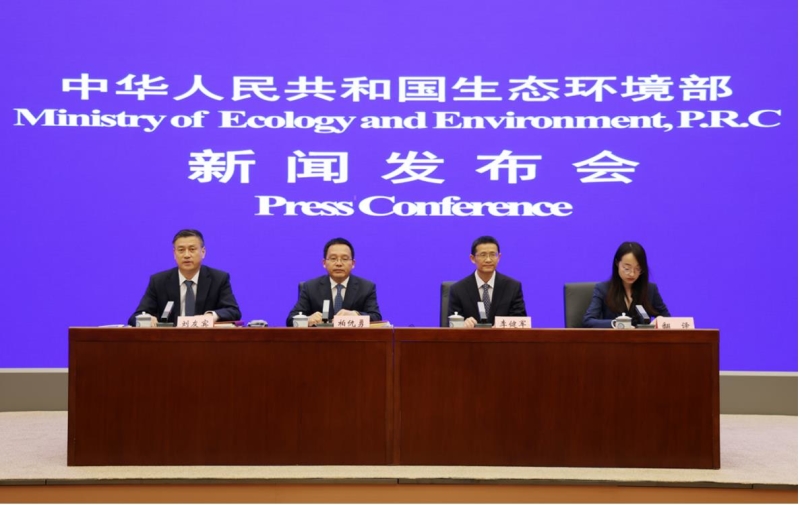
China's Ministry of Ecology and Environment holds a press conference in Beijing, capital of China, May 26, 2021. /Xinhua
China's Ministry of Ecology and Environment holds a press conference in Beijing, capital of China, May 26, 2021. /Xinhua
China has seen across-the-board improvements in its eco-environment amid the country's intensifying efforts to spur green development, according to the China Environment Report 2020 published by the Ministry of Ecology and Environment in May.
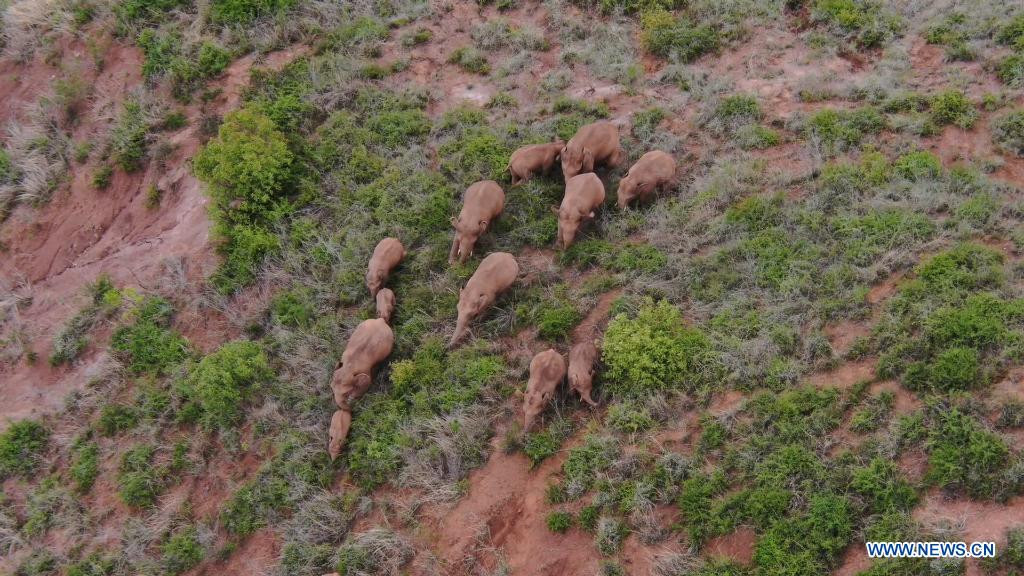
The aerial video screenshot taken on June 18, 2021, shows a herd of wild Asian elephants in Eshan County of Yuxi City, southwest China's Yunnan Province. /Xinhua
The aerial video screenshot taken on June 18, 2021, shows a herd of wild Asian elephants in Eshan County of Yuxi City, southwest China's Yunnan Province. /Xinhua
In August, China's herd of wandering Asian elephants finally returned home after a 17-month odyssey that caught global attention.
Deploying drones, restricting traffic and lights, sending a special work team to guide the giant animals ... all these measures taken by the local authorities highlighted the patience and care the Chinese people paid to the uninvited wild elephants.
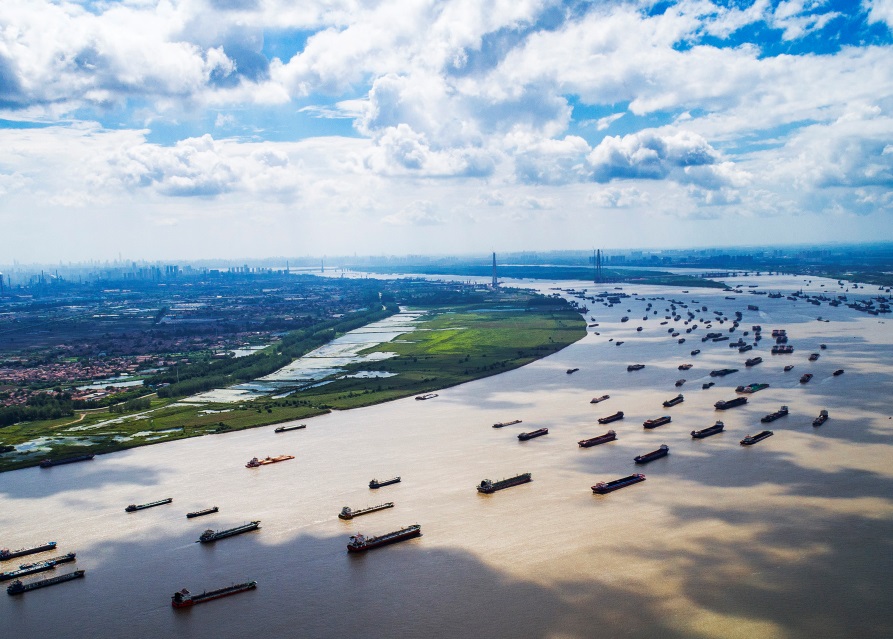
Aerial photo shows ships sailing on the Yangtze River near Yangluo Port in Wuhan, capital of central China's Hubei Province. /Xinhua
Aerial photo shows ships sailing on the Yangtze River near Yangluo Port in Wuhan, capital of central China's Hubei Province. /Xinhua
China's top leadership has called for efforts to turn the Yangtze River Economic Belt into the country's main focus for green development, the major artery for a smooth "dual circulation" of domestic and international markets, and the main force spearheading high-quality economic development.
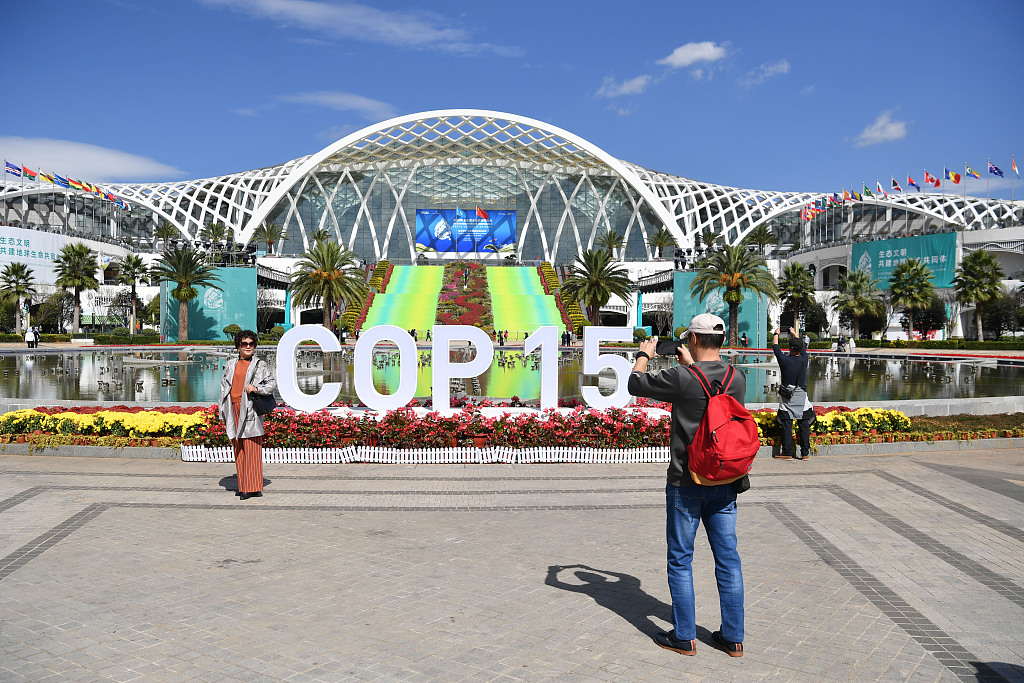
The 15th meeting of the Conference of the Parties to the Convention on Biological Diversity (COP15) is held in Kunming, capital of southwest China's Yunnan Province, from October 11 to 15, 2021. /CFP
The 15th meeting of the Conference of the Parties to the Convention on Biological Diversity (COP15) is held in Kunming, capital of southwest China's Yunnan Province, from October 11 to 15, 2021. /CFP
China vowed to take the lead by investing 1.5 billion yuan (about $233 million) to establish the Kunming Biodiversity Fund to support biodiversity protection in developing countries at the 15th meeting of the Conference of the Parties to the Convention on Biological Diversity (COP15) in October.
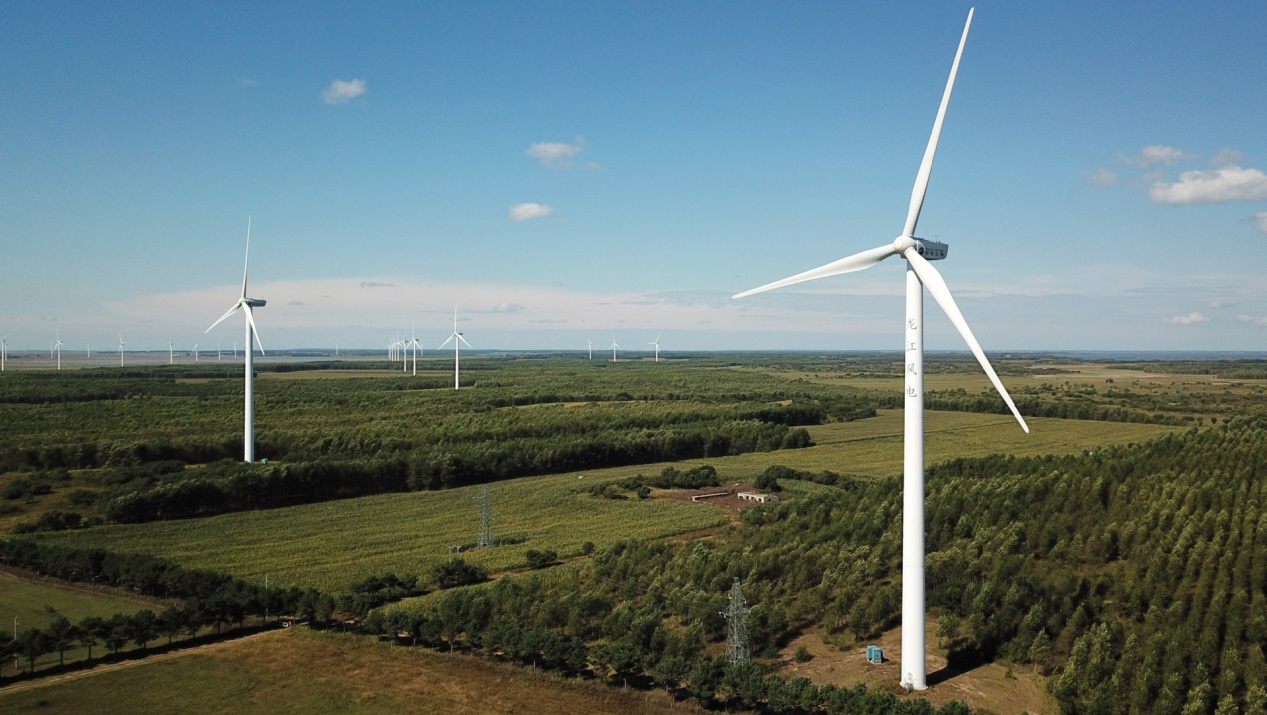
A photo taken on September 8, 2021, shows a wind power facility in Daqing, Heilongjiang Province, northeast China. /Xinhua
A photo taken on September 8, 2021, shows a wind power facility in Daqing, Heilongjiang Province, northeast China. /Xinhua
China has begun its first phase of large wind power and photovoltaic projects in desert areas with an installed capacity of approximately 100 million kilowatts since mid-October. These projects are among those on the country's list for developing wind and photovoltaic power in desert areas.
The country also pledged to put in place a "1+N" policy framework for carbon peak and carbon neutrality, and released implementation plans for peaking carbon dioxide emissions in key areas and sectors as well as a series of supporting measures.
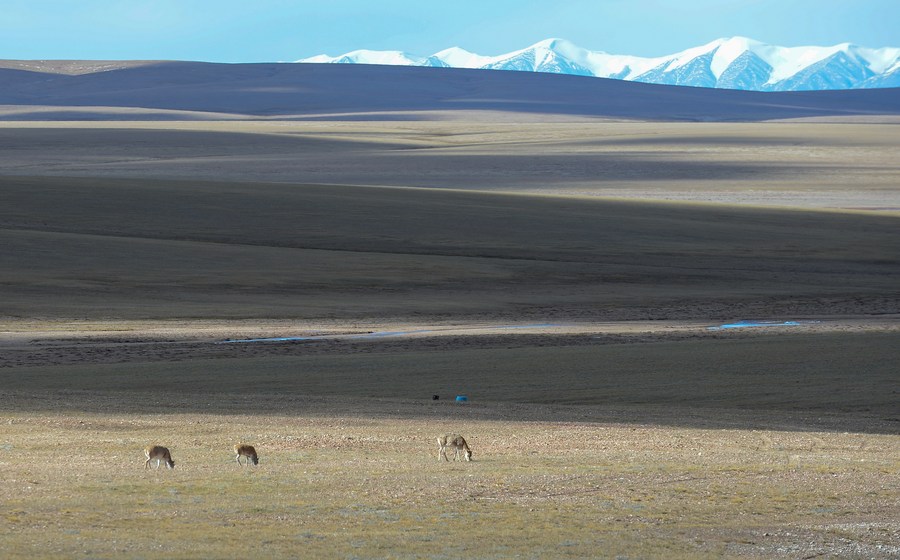
Tibetan antelopes are seen at Hoh Xil area of the Sanjiangyuan National Park in Qinghai Province, northwest China, September 28, 2021. /Xinhua
Tibetan antelopes are seen at Hoh Xil area of the Sanjiangyuan National Park in Qinghai Province, northwest China, September 28, 2021. /Xinhua
China formally established its first batch of national parks on October 12. Sanjiangyuan National Park, Wuyi Mountain National Park, Giant Panda National Park, Northeast China Tiger and Leopard National Park and Hainan Tropical Rainforest National Park are among those on the list.
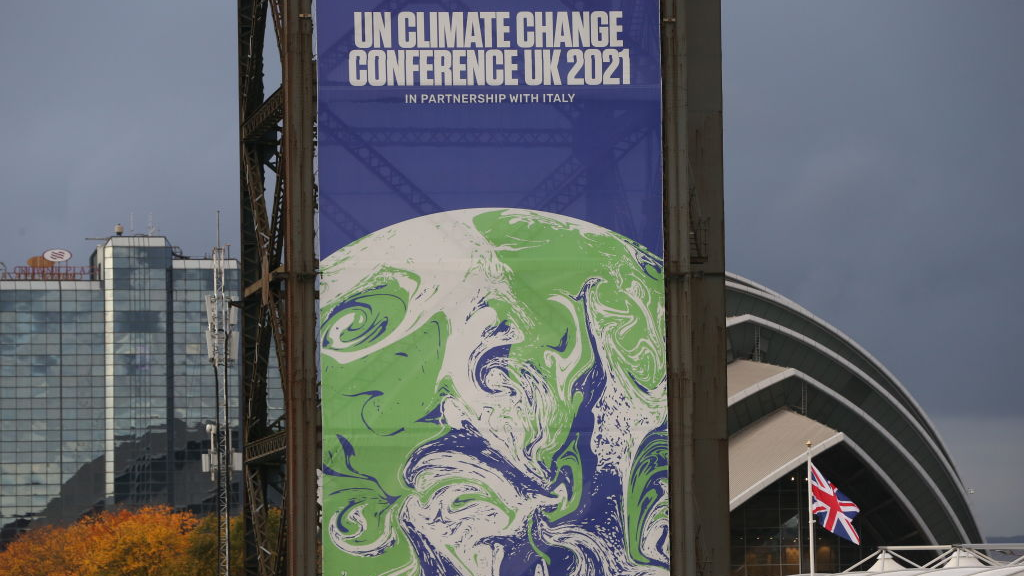
A view of street banners of the 26th UN Climate Change Conference (COP26) held at the Scottish Event Campus in Glasgow, the United Kingdom, October 31, 2021. /Getty
A view of street banners of the 26th UN Climate Change Conference (COP26) held at the Scottish Event Campus in Glasgow, the United Kingdom, October 31, 2021. /Getty
At the United Nations (UN) climate conference, known as COP26, in November, China reiterated a call for global unity and actions to address climate change and put forward three suggestions – upholding multilateral consensus, focusing on concrete actions and accelerating green transition.

